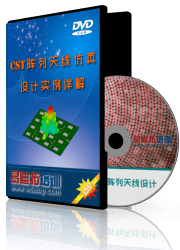- 易迪拓培训,专注于微波、射频、天线设计工程师的培养
不知道用FEKO仿真出的微带天线准不准?
您可以参照下FEKO自带的例子来进行仿真下。
方向图还可以,阻抗似乎有点差异,可能算近场不是很好
我本人也是搞天线的,我觉得feko仿真短波天线准确度还是比较高的,而且比hfss快很多,其他类型的天线用hfss仿真就可以了,微带天线用ie3d比较准确。个人观点仅供参考:)
这个阻抗仿真不准确是由于MOM所引起的,并不是FEKO在这上面处理不当!
IE3D也是基于MOM的,为什么又感觉比较准呢?
我感决很准
和解析解对比
吻合的太好了
嗯,今天我做了一个对比,发现两者在阻抗计算结果方面差异比较大,feko官网上面有一个将HFSS与FEKO仿真以及实际测试值比较的文章,大家可以去看看
請問在哪?您指的是哪一個?
由於 FEKO 他是一套結合 MOM , FEM, PO/UTD, GO, GA 的全波電磁軟體,他的數值方法幾乎涵蓋所有頻域的解法。 假使要 Time Domain ,他需要透過 FFT 來轉換 (TimeFEKO) 。
對使用者來說 Mesh 應該是比較麻煩的問題。當然針對MESH 的部分 HFSS還是有他獨到之處。但是遇到無法自我收斂時,HFSS應該還是要去針對某些架構做Local Mesh。
1. MOM/GF
一般來說假使 IE3D 跟 FEKO 來說,假使都是使用 Green Function (Substrate 是無窮大時),其結果應該都是接近的,假使您下的 Feed 跟 Mesh 是正確的時候。
當介質是有限大小,而且金屬貼近Substrate 邊緣時,Substrate 是無窮大時,求解可能就會失去精準度。
2. MOM/SEP, MOM/VEP
傳統的 MOM 外含 SEP or VEP 時,請注意您介質端的 Mesh 是否切的夠好,假使不好的話,就會失去其精準度。
3. MOM/FEM
MOM 結合 FEM 的方法,其結果應該都是接近的,假使您下的 Feed 跟 Mesh 是正確的時候。
PS. 假使有任何錯誤之處還請大家指教,以上是我小小的認知。
其实每种软件都是准确的,只不过主要在于操作!其中网格的刨分是至关重要的。
要知道feko是手动刨分网格,而不像HFSS,CST。可以自适应刨分。
feko对客户的网格刨分要求比较高。
当比较软件的时候,要公平对待,比如从刨分开始到求解。用好了,那种软件都好!
(不讨论电大和电小问题范畴)
就网格剖分来说,FEKO确实很难使用啊,
对用户的要求太高了。普通工程师很难把FEKO用好的。
所以说FEKO不适合算微带天线
几个简单的例子可以,工程上的稍微复杂就不行啊。
我还是觉得算为带天线就用HFSS,就不错
在股市中...有聽過「好的老師帶您上天堂,不好的老師帶您住套房」。
這是對軟件的熟悉度跟用心度的問題。
原則上 MOM , FEM, FDTD 歷經了那麼多年,但是這三大方法都還在啊。說實在的誰也無法取代對方,因為各有優缺點。
微带天线的仿真用hfss计算vswr相对feko更准确一些,一般精度相差0.2-0.4左右
两个方法计算方向图基本是一致的。
所以用hfss来算微带天线更好一些的。
具体算微带,选择HFSS,IE3D都比较好。如果是二维的模型,使用IE3D很好。
樓上的兩位說的都對。真的是各有優缺點。
但我這用MOM/FEM 時,其結果也很逼近 HFSS。我想 substrate 那真的會有些許的影響..畢竟演算法不一樣。
呵呵,本来想回复的,看到后面两个帖子说的很清楚了,我就不必重复了。
100个工程师里,有98个说剖分难用,要求太高,有两个说还好,其中一个补充道这个跟用心度有关,呵呵,是的,代理商当然要用心啦。
嗯,这个比喻很恰当。
三种方法当然都存在,但你没有弄清楚,FEKO存在的理由不是因为擅长微带电路。
Webhugo不要生气啊。FEKO是个好软件,Ibelieve
呵呵!我幹嘛生氣阿..這是交流區。我只是描述事實。
現在 是討論微帶天線不是微帶電路。
FEKO V5.3 已經支援多Port 的分析。
non radiating networks 在 V5.4目前已將 INCO 做到 CADFEKO 裡。
MOM的方法在求微帶天線(IE3D) 是大家公認不錯的好工具,微帶電路的Sonet 也是MOM阿。
MOM還是有他獨特之處。當然其他的方法(FEM or FDTD)也有他們的強項。
http://www.sonnetsoftware.com/products/em/ef_how_em_works.asp
Sonnet Theory
Sonnet uses the Method of Moments applied directly to Maxwell? Equations to solve planar problems. For a detailed mathematical description of the Method of Moments, see [1]. For a detailed description of the theory used by Sonnet, see [2]. Following is a non-mathematical description of Sonnet? implementation of the Method of Moments:
Sonnet first subdivides, or meshes, the metal of a circuit into small subsections. It then takes one of these subsections and, ignoring all other subsections, calculates the voltage everywhere due to current on that one subsection. Sonnet repeats this process for each subsection in turn. Then Sonnet places current on all subsections simultaneously and adjusts those currents such that the total voltage (due to current on all subsections) is zero everywhere that there is conductor. You can not have a voltage across a conductor. This is called a ?oundary condition? The current that gives us zero voltage across all conductors is the solution to the problem (see below for a modification to this when loss is included).
這個是我想說的如附件..這個是前一陣子做過的題目,供大家參考。
IEEE ANTENNAS AND WIRELESS PROPAGATION LETTERS, VOL. 6, 2007 25
A Compact Broadband Planar Antenna for GPS, DCS-1800, IMT-2000, and WLAN Applications
RongLin Li, Senior Member, IEEE, Bo Pan, Joy Laskar, Fellow, IEEE, and
Manos M. Tentzeris, Senior Member, IEEE


MOM/GF
一般來說假使 IE3D 跟 FEKO 來說,假使都是使用 Green Function (Substrate 是無窮大時),其結果應該都是接近的,假使您下的 Feed 跟 Mesh 是正確的時候。
當介質是有限大小,而且金屬貼近Substrate 邊緣時,Substrate 是無窮大時,求解可能就會失去精準度。

MOM/FEM
MOM 結合 FEM 的方法,其結果應該都是接近的,假使您下的 Feed 跟 Mesh 是正確的時候。

特别佩服webhugo 小编的想法,其实用FEKO真正多的地方是EMC,RCS,反射面天线。每一研究所都回有很多套软件的。因为每套软件的功能不同。
Software Dongle Type
Ansoft Parallel
CST USB
FEKO USB
WASP-NET USB
IE3D Parallel
Grasp9.2 none
这家公司是美国的一家军工微波生产商所用的软件!
呵呵! 其實很多人說,他只是算電大尺寸可行,或是僅針對某總應用,其實也不竟然,您說的都是其他軟體很難做的應用。假使您見過 EMSS 的原廠訓練手冊(他總共分10個章節),從基礎的電磁理論說起到各種數值方法的應用到產品端,您就知道他應用範圍的廣泛。
由上面的 IEEE Paper 您可以見到他有一定的精準度,MOM/GF 在算也很快, MOM/FEM 我的印象是一般 E6300 CPU 半小時多就算完了,記憶體也小於 2GB 。
FEKO USB <-- 這個現在很少在用了(舊版本都用這個)。
下面有點商業廣告
..... 主要就是不管你幾核他都只算一個CPU的授權。
還有他在平行的效能,跟有過 Intel Cluster 的測試。
V5.4 在這方面有新的修正 - Multi-core CPU licencing policy changes
http://www.feko.info/News/multi-core-cpu-licencing-policy-changes.html
http://www.feko.info/feko-product-info/technical/special-module-and-feature-articles/parallel-processing/parallel-processing
Parallel Processing
A short description of FEKO's parallel processing abilities.
Many modern computer systems make use of multiple processing units in order to improve computing performance. Such systems include:
simple multicore CPUs (i.e. one computer with one CPU having multiple cores),
multi-CPU PCs and SMP workstations (symmetric multiprocessor, typically 2 to 8 CPUs),
large massively parallel distributed systems with typically 128 to 1024 CPUs (which can again be multicore).
In order to gain the most benefit from the computational hardware, parallel versions of FEKO support state-of-the-art interconnect technologies like GigE, Myrinet, Infiniband or vendor proprietary interconnects like the SGI NumaFlex technology.
In FEKO all the solution phases for all the various numerical techniques have been parallelised, e.g. the ray-tracing for UTD, the MoM matrix setup and solution, the near- and far-field calculations and also seemingly simple things such as power loss computations.
We are very proud of the parallel efficiency of the MLFMM in FEKO. Even for this mathematically complex technique all the phases of the solution process (near-field matrix setup, aggregation, translation, disaggregation, pre-conditioning, iterative solution etc.) have been parallelised rigorously. The efficiency of the parallel implementation in FEKO is in the order of 80% to 95%, depending on the problem and the solution phase etc. This means that for a system with 32 processors the run-time would be approximately 26 times (0.8*32) faster than on a sequential run, i.e. a single processor.
http://www.feko.info/News/feko-certified-as-intel-cluster-ready.html
FEKO Certified Intel Cluster Ready
FEKO works closely with Intel to achieve the best possible performance from cluster computing environments. In this endeavour, Intel recently certified FEKO as "Intel Cluster Ready".
Intel recently launched the "Intel Cluster Ready" program to facilitate easier design, build and deployment of cluster computers. Developers of cluster computing software (such as FEKO) can validate their software for use on standard Intel cluster environments and be be certified as Independent Software Vendors (ISVs) by Intel.
FEKO is dedicated to improving the performance of our software in cluster computing environments and have been working closely with Intel engineers for a long time in this endeavour. As such FEKO was recently certified as ISV by Intel and may proudly brand our software with the Intel Cluster Ready logo.
This means that FEKO customers can purchase an Intel cluster computer with the confidence that FEKO has been qualified on this computing environment and will work straight out of the box.
More information on the Intel Cluster Ready initiative is available on the Intel website


CST微波工作室培训课程套装,专家讲解,视频教学,帮助您快速学习掌握CST设计应用
上一篇:feko并行计算设置
下一篇:FEKO5.1比5.0的版本在什么地方有所改进?












 沪公网安备 31011202014168号
沪公网安备 31011202014168号
 1427313829
1427313829 旺旺在线
旺旺在线 Skype Online
Skype Online 13761612886
13761612886 官方淘宝店
官方淘宝店
